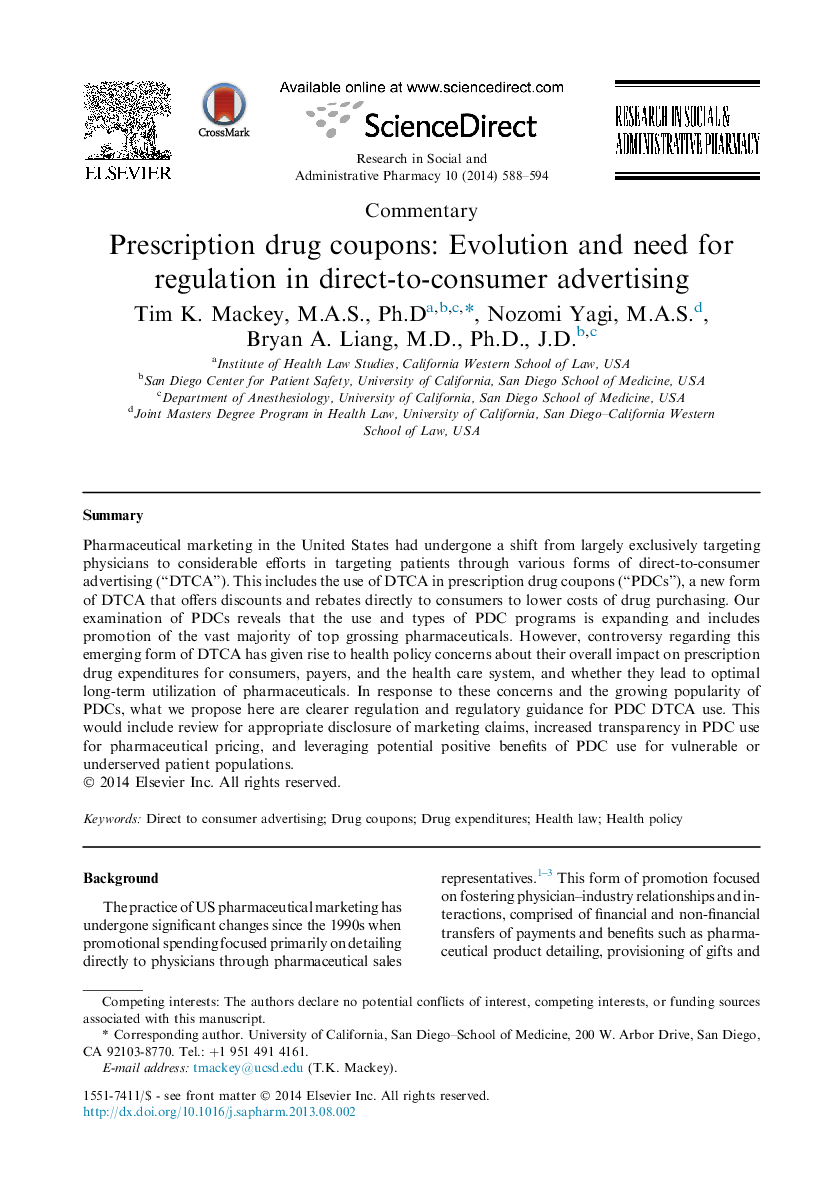| Article ID | Journal | Published Year | Pages | File Type |
|---|---|---|---|---|
| 2508610 | Research in Social and Administrative Pharmacy | 2014 | 7 Pages |
SummaryPharmaceutical marketing in the United States had undergone a shift from largely exclusively targeting physicians to considerable efforts in targeting patients through various forms of direct-to-consumer advertising (“DTCA”). This includes the use of DTCA in prescription drug coupons (“PDCs”), a new form of DTCA that offers discounts and rebates directly to consumers to lower costs of drug purchasing. Our examination of PDCs reveals that the use and types of PDC programs is expanding and includes promotion of the vast majority of top grossing pharmaceuticals. However, controversy regarding this emerging form of DTCA has given rise to health policy concerns about their overall impact on prescription drug expenditures for consumers, payers, and the health care system, and whether they lead to optimal long-term utilization of pharmaceuticals. In response to these concerns and the growing popularity of PDCs, what we propose here are clearer regulation and regulatory guidance for PDC DTCA use. This would include review for appropriate disclosure of marketing claims, increased transparency in PDC use for pharmaceutical pricing, and leveraging potential positive benefits of PDC use for vulnerable or underserved patient populations.
